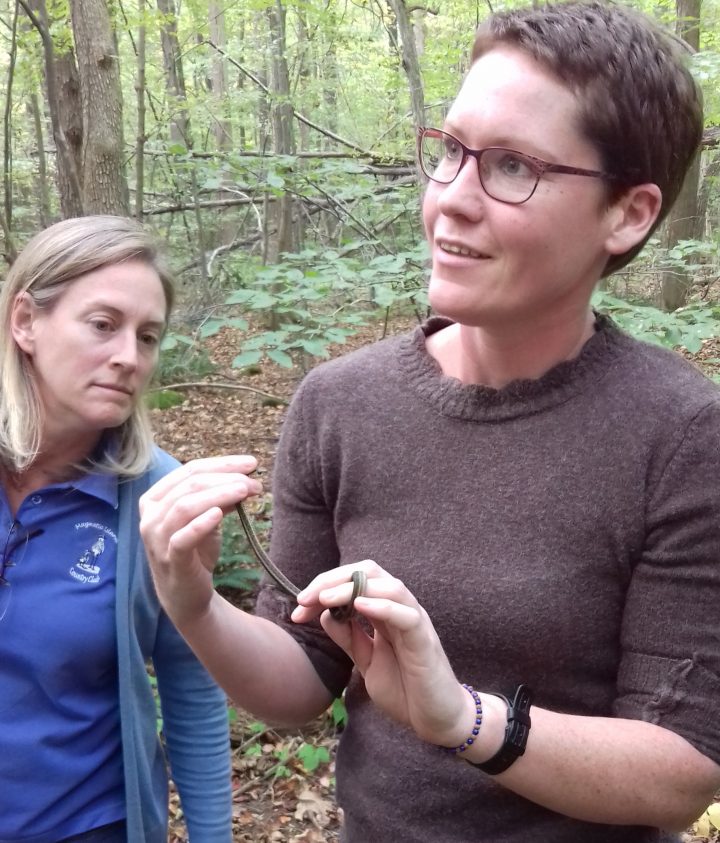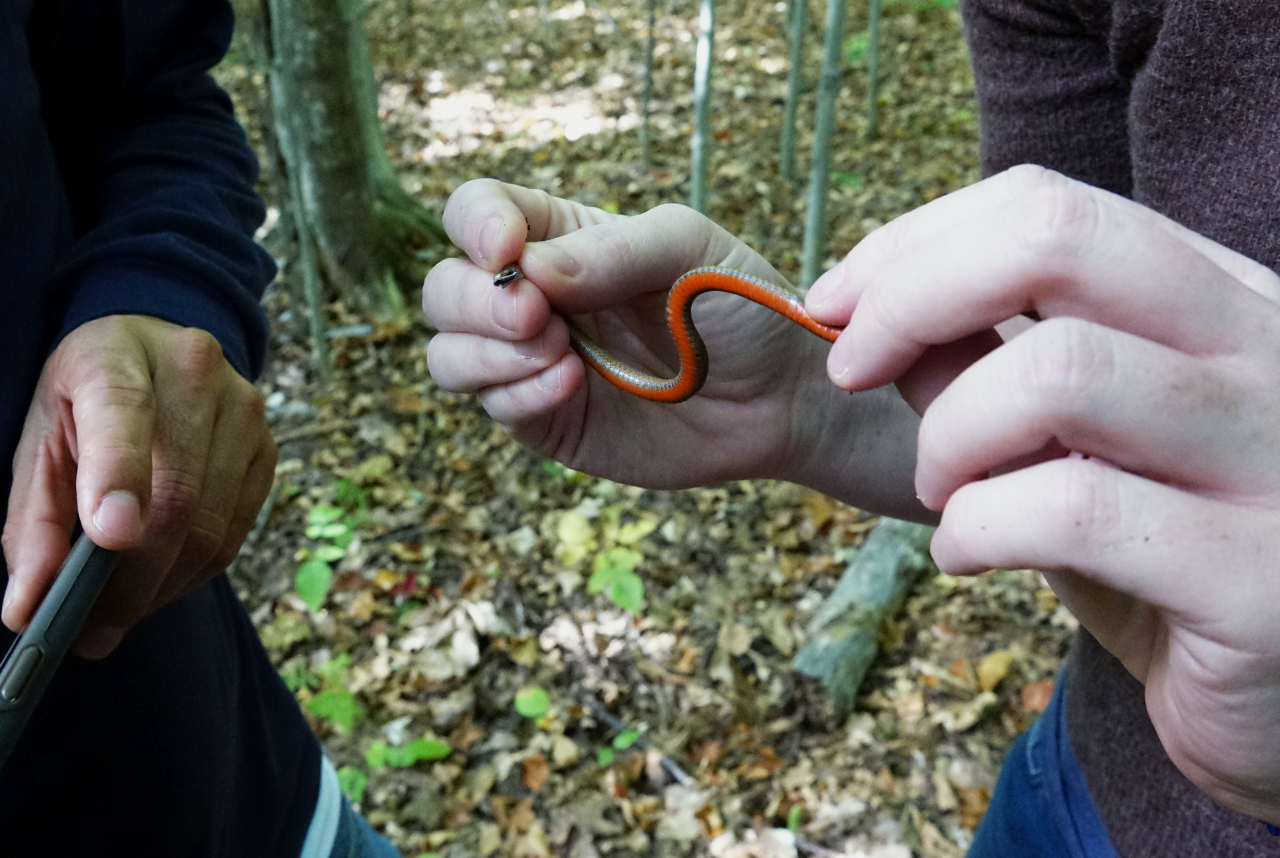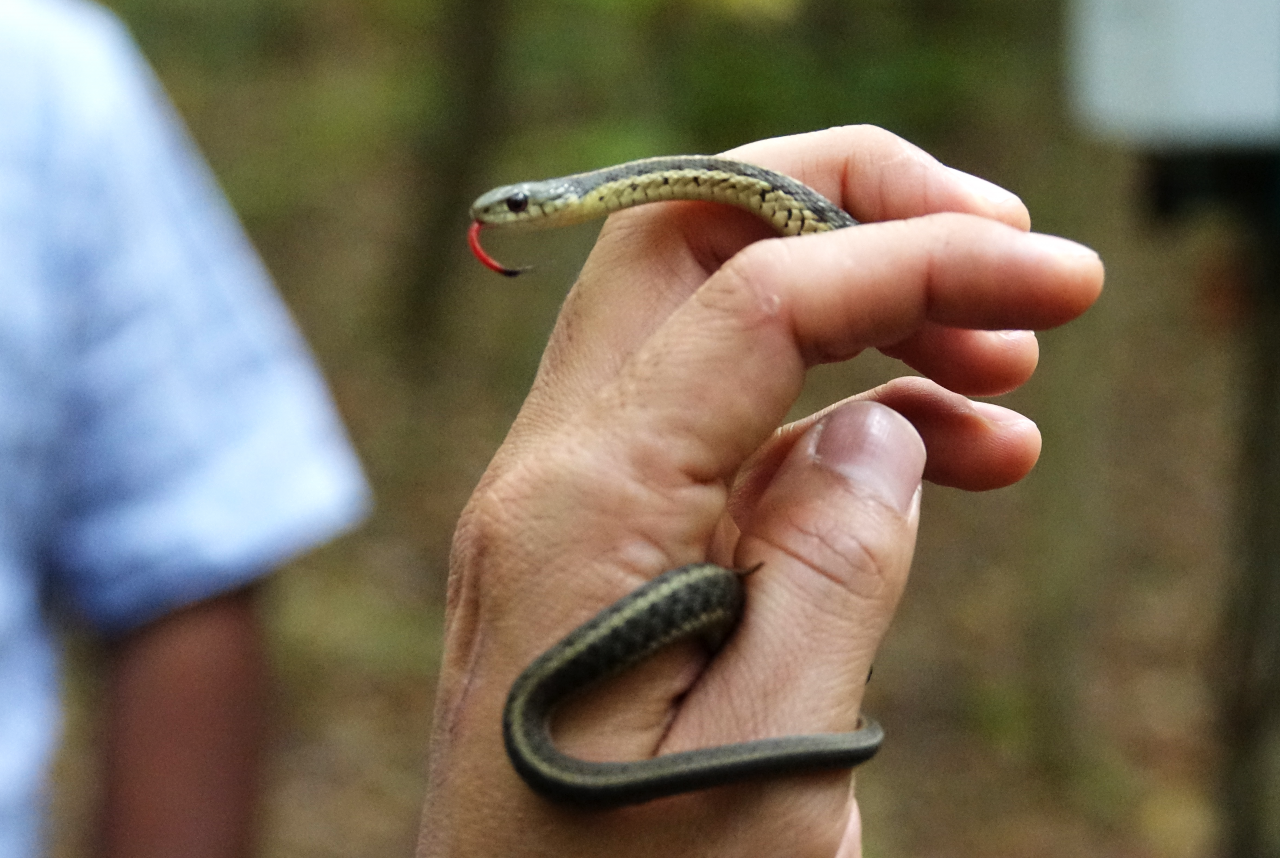Taking flight in Raven

“We were late because we saw a cardinal.” It may seem odd to some but this was more than an adequate reason for rolling in late to the Raven Sound Analysis Workshop I attended in Ithaca two weeks ago. Then again, we were in a workplace where a rare sighting of a bird is enough to justify an email alert that can evacuate 200 twitching colleagues, binoculars in hand.
We had traveled from Mexico, Panama, Serbia, Singapore, and Australia, as well as across the U.S., and our study systems were as diverse as our nationalities – taxonomy, behavior, whales, birds, and frogs. The one thing we had in common is that we were eavesdroppers and we had to come to learn how to listen.
Course leader Russ Charif quickly asserted himself as “King Song” by delivering an explosive series of introductory lectures that grounded us in the fundamental principles of sound. The waves that Russ created around the lecture hall excited our cochlea hair cells and fired even the most inactive of our neurons. How does a spectrogram come to be? What is a decibel to you? When is your data completely useless? Russ answered the questions that we didn’t even know we needed to ask.
These instructive lectures were tag teamed by Ashik Rahaman and Bobbi Estabrook who helped us explore the interface of Raven’s sound software. We clumsily navigated the exercises specifically designed to get us up and running with core functions. Just when we thought our brains might combust from all the neuro-ignition, guest speakers would visit and share their research triumphs and challenges, helping to create the sense of community that is so inviting in the ecoacoustics arena.
Between all the hard work, a motherly English voice would offer us tea and biscuits or organize beers and transport for all. Liz Rowland left no social stone un-turned as she made us feel at home in this far-away land of chipmunks and woodpeckers (yellow-bellied sapsuckers no less!).
We also gave talks about our research. I shared stories from my data collected in Papua New Guinea where 6% of the world’s frogs remain largely unknown. I played the call of the climaxing frog which increases gradually in amplitude and peak frequency until his final release.
When things seemed a little too birdy, I asserted my inner Steve Irwin and pounced on a garter snake as we walked through the woods, securing the stereotype of bashful Australians for my colleagues at hand. When things seemed a little too technical, we were toured around the Macaulay Library, left to marvel at the calls of extinct species, once recorded on olden day reels. And when things seemed like we had a handle on the basics of sound analyses and we were ready for the big bad world of science, we said goodbye to a new community of ecoacousticians armed with sound data and not afraid to robustly measure it.

Deb’s snake wrangling skills impressed everyone on the SWIFT deployment demo walk. Image by Beng Yeo. 
This garter snake greeted Deb with a “smile”. Image by Beng Yeo.
You never really know exactly what you’re signing up for with short courses but the Cornell Lab have created a well-oiled program that gives you an ecoacoustical full body preen. It was a thoroughly enjoyable and educationally priceless experience that taught us exactly what we needed to launch us on our way, just like a Raven I suppose.
Dr. Deb Bower is a postdoctoral research scientist in the College of Science and Engineering at James Cook University in Townsville, Australia. She recently participated in BRP’s Sound Analysis Workshop



